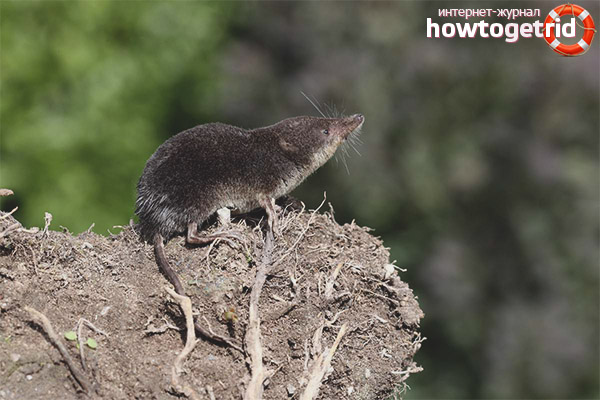The content of the article
Kutora is a water shrew, prefers to live on land, but water gives her food, so she can stay in a stream or river for a long time, swimming and diving tirelessly. Thanks to this, she was even given another name - water melting.
Animal description
- Kutora belongs to the family of shrews. This animal is quite small, although it is considered the largest shrew in the European part of Russia: body length 7 - 9 cm, weighs from 10 to 25 grams.
- The color of the animal is two-tone. There is a border between two colors: the upper torso is saturated black or dark brown. The bottom is a contrast, since it is silver-white or yellow with a white tint.
- Kutora can be in the water for a long time even at a depth, because nature has endowed it with special devices for swimming. These are dense rims that consist of dense and very stiff hair. This unique device is located on the feet, closer to the edge. There is also a ridge located along the underside of the tail. It also helps to stay on the water surface. The tail itself is quite long compared to the length of the water melts - 5-6 cm.
- The fur of the animal is very thick and difficult to get wet, it saves from the cold, but it limits the diving very much, the animal has to make some efforts. Therefore, the boat floating on the water is immediately noticeable - its body protrudes strongly.
- The ears are reduced, it is difficult to notice them under a fur coat. To prevent water from entering the ear canal, during numerous dives it closes thanks to special valves.
- The tops of the animal's teeth are reddish with a brown tint, on each side there are four intermediate teeth.
Lifestyle
Their sleep lasts a short time, then there is increased activity, which again gives way to rest. Moreover, both day and night, such a rhythm remains unchanged. During wakefulness, the cutter shows great energy, being constantly in motion, mainly in water. But it stays there for a while, from time to time resting on the shore so that the fur can dry.
Their home is a dug mink on the banks of the stream, and there is a special remote place, representing a kind of camera-bedroom. Water shrews can also settle in abandoned burrows of other small animals.
Food
A water shrew feeds on various insects that live in the water: mollusks, small fish and frogs, insect larvae and snails, finding them in the water column or at the bottom, examining every stone and plants. Having caught the prey, she holds it tightly in her very sharp teeth, which make it possible not to miss even the slippery fish, and with it rises to the surface.
He loves to feast on earthworms, finding them with his moving nose, which carefully examines every excavation and crack in the soil. Then he digs up the earth. It can attack a larger prey, showing the skills of a real predator: immobilizes the victim, biting the base of the head, and then begins the meal, regardless of whether the victim is alive or died.
He eats a lot. During the day, it absorbs such an amount of food that is more than its mass. If she caught so much prey that it is impossible to eat, the animal will certainly make reserves.
Her place of residence is usually a clean river or stream with a slow calm flow. Here kutore full expanse, because she swims and dives perfectly. It leaves very rarely in a reservoir, and is far from being removed.On land it moves in small but very sharp rapid jumps. In the thickets of bushes he feels good.
The cold winter is where water does not freeze due to the presence of keys in the water. Can hide under the thickness of snow. The animal does not fall into hibernation, but practically does not appear on the surface, and warm thick fur allows it to withstand frosts.
Breeding season
It is a pleasure to watch the male caring for the chosen one. At first, he fearfully tries to approach her, carefully observing the reaction, and if she does not drive the gentleman away, pairing occurs. Most often, immediately after the female gave birth, mating occurs again, and by the time the children from the first litter leave for separate residence, the next litter will appear.
The gestation period is on average 24 days; 3-6 cubs are born in a litter; less often, up to 10 babies. Children are kept in the nest. Chooses a cutter spot for him in the driest place. It is very cozy, the bottom is covered with stems of various plants.
Video: small kutora











Submit